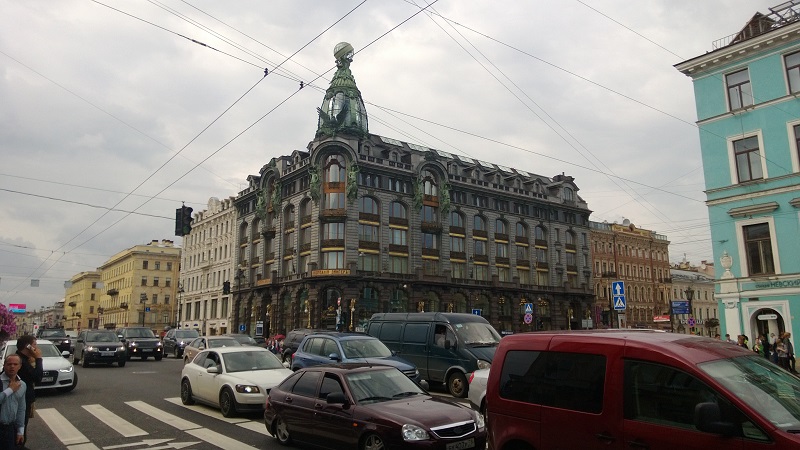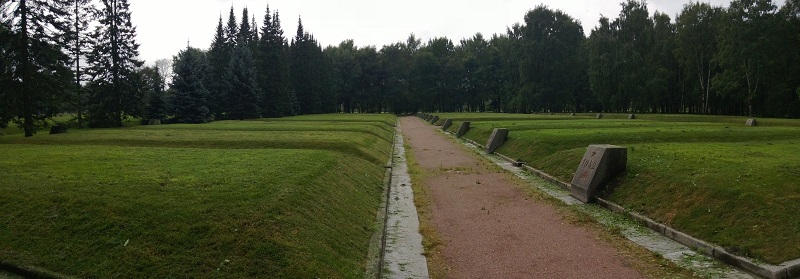We arrived in Moscow yesterday morning, but before we start sharing our adventures here, I want to write about our last full day in St Petersburg before I forget what we did and where we went.
Greg wrote about visiting the Piskaryovskoye Memorial Cemetery in his last post. We took the subway there and back and oh my gosh the subway is a long way underground. It must be halfway to China, or maybe even Australia. When we stood at the top of the escalator going down, it was impossible to see people getting off at the other end, that’s how long it was.
We had lunch at the shopping centre near the Akademicheskaya metro station (filled pancakes from a Teremok fast food place, and I tried Kvass, which I thought was a fruit drink with mint and is actually a fermented rye bread drink. There’s another drink made with cranberries but I can’t remember its name. Will look for it and try it when I find it), then we caught the metro back to Nevsky Prospekt and did the Lonely Planet’s recommended walking tour, which took us along some of the many canals and past more fascinating buildings between Nevsky and the river.
Starting off at the magnificent Singer Building, which now has a large bookshop and cafe (and probably no sewing machines!), we nipped into the bookshop for a quick browse. I found a full set of Jamie Oliver’s cookbooks plus a few of Gordon Ramsay’s in Cyrillic, and most surprisingly, a Cyrillic language version of Bourke Street Bakery, which is a Sydney-based bakery. I sell the English language version. We wandered along one of St Petersburg’s many canals to the magnificent Church of the Saviour on Spilled Blood, where Alexander ll was blown up by a terrorist group in the 1880s hence its catchy name. Greg reckons there’s a bouncy castle in the highest cupola, but we didn’t go inside to check. We kept on walking along canals, past the now-ruined Court Stables and Pushkin’s last home, now a museum. We saw 4 of 5 bridal parties while we walked – Friday afternoon must be wedding time in Russia.
We wandered along a canal by the side of part of the Hermitage Museum to the Bolshaya Neva River, then along the back of the museum to the Alexander Column and the large square at the front of the museum. Crossing Nevsky Pr, we wandered through some side streets to the Faberge building which is still a jewellers but sadly there were no eggs anywhere. We caught a trolley bus just around the corner from the Hotel Astoria and I caught a glimpse of No 13 Malaya Morskaya, where Tchaikovsky died in 1893.
Greg went to the railway station to buy a luggage trolley for our still-enormous duffel bag – we’re hanging on to a few things we think we may need when we’re at Lake Baikal for a few days in the middle of our Trans-Siberian train trip. We had dinner at one of the many Coffee House cafes near Nevsky Pr – they seem to be Russia’s answer to Starbucks (which are also here, but not as common). A young waitress practised her English with us. It was … okay, she told us she had done a 7-day course.








